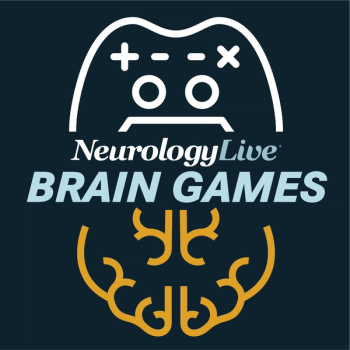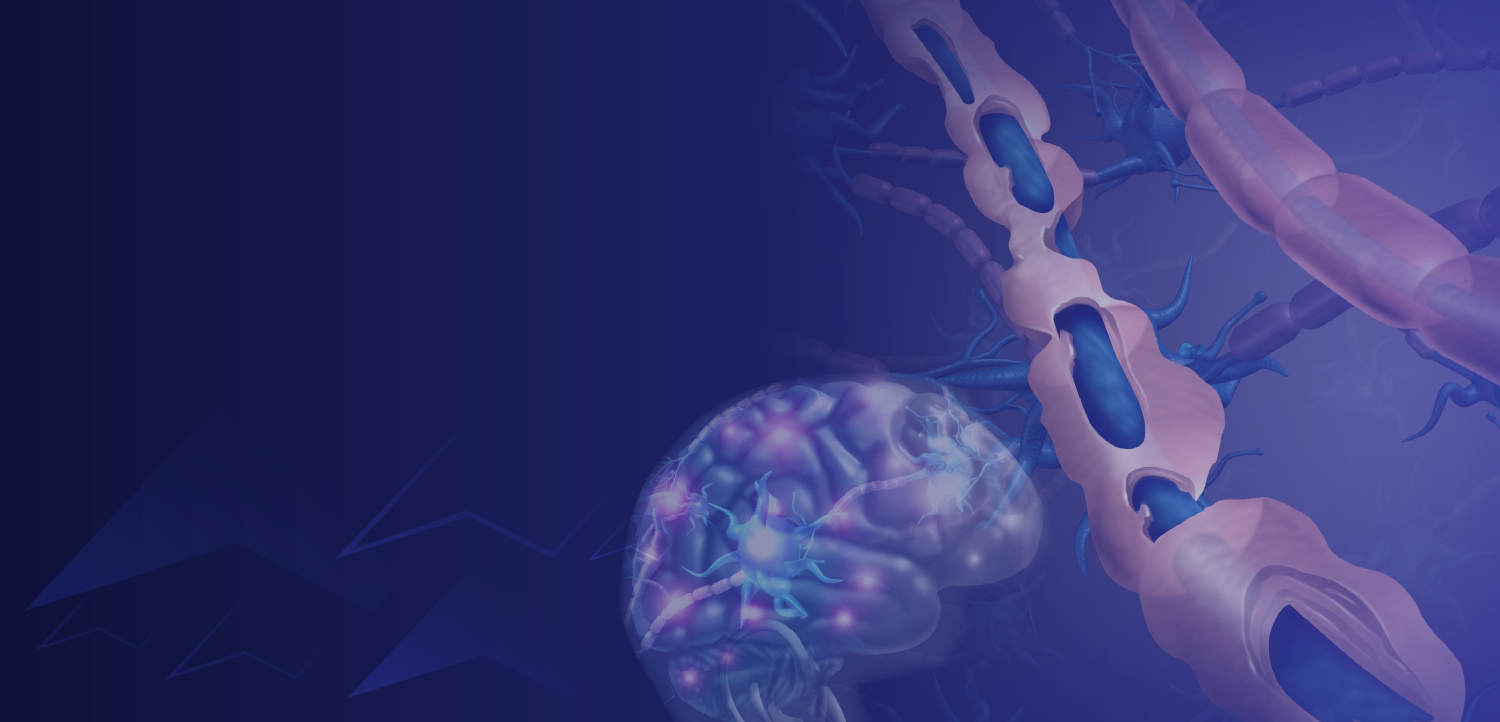
Predicting Amyloid Positivity with CARM: Clinical Insights from James Galvin, MD, MPH
The professor of neurology at the Miami Miller School of Medicine discussed how the Cognivue Amyloid Risk Measure (CARM) may help predict amyloid presence and informs diagnosis, trial eligibility, and early treatment pathways.
Alzheimer disease (AD) is a major health concern, affecting nearly 7 million people in the U.S. and more than 55 million worldwide. Detecting this neurodegenerative disorder as early as possible has been a main priority for healthcare officials, with several emerging tools like Cognivue Clarity being tested in research settings. Cognivue’s Amyloid Risk Measure (CARM), combines an individual’s age with 3 cognitive subtests from the Cognivue Clarity—a 10-minute digital cognitive assessment tool—to generate a four-point risk score indicating the likelihood of amyloid presence in the brain.
Earlier this year, a group of investigators published findings using patients from the Bio-Hermes study (NCT04733989) to test whether the CARM can differentiate controls from AD, mild cognitive impairment (MCI) due to AD, and MCI/dementia caused from non-AD etiologies. In the analysis, use of this novel tool significantly distinguished cognitively impaired from cognitively normal individuals (P < 0.001; Cohen’s d = 0.732), while the CARM differentiated amyloid status by PET (P < 0.001; d = 0.618) and blood biomarkers (all P < 0.001).
In the study, dichotomizing CARM thresholds into low (CARM1/CARM2) and high (CARM3/CARM4) likelihood provided excellent discrimination for amyloid PET positivity (OR, 3.67; 95% CI, 2.76-4.89). Overall, the study showed that Cognivue Clarity, a 10-minute computerized battery, can detect individuals with cognitive impairment, identify those likely to have amyloid positivity, and could thereby capture individuals with prodromal AD.
To better understand these findings, NeurologyLive® sat down with study author
NeurologyLive: From a clinician perspective, how does this tool operate and function?
James Galvin, MD, MPH: The Cognivue Clarity is a computerized cognitive assessment. It uses adaptive psychophysics, which essentially means it calibrates to a person’s baseline motor and visual skills to tailor the stimuli for subsequent tests. The Clarity test includes 10 subtests. We used this platform in the Bio-Hermes study—a biomarker study involving over 1,000 people, including healthy controls, individuals with clinical MCI due to Alzheimer’s disease, and those with mild Alzheimer’s dementia.
Each participant in the study received an amyloid PET scan, so we knew definitively whether they had amyloid deposition. This gave us four distinct groups: cognitively normal with no amyloid (true controls), cognitively normal with amyloid (preclinical AD), cognitively impaired with amyloid (MCI or mild dementia due to AD), and cognitively impaired without amyloid.
We found that Cognivue was effective in identifying individuals with mild cognitive impairment. It proved to be a solid screening tool for detecting possible MCI or dementia. But what really stood out was that three of the subtests—adaptive motor control, visual salience, and shape discrimination—were particularly sensitive to the presence of amyloid. People who had amyloid performed significantly worse on these tests than those without amyloid.
These tests are rooted in evolutionarily essential functions. Adaptive motor control involves responding to environmental cues; visual salience is about detecting meaningful visual information; and shape discrimination helps assess whether something in our environment is safe or threatening. These skills are governed by the posterior parietal, posterior temporal, and prefrontal cortices—regions known to accumulate amyloid early in the disease process.
Using machine learning, we combined performance on those three tests with age—since amyloid accumulation is age-related—to develop the Cognivue Amyloid Risk Measure, or CARM. We then scaled it from 0 to 100 because, well, everyone likes a simple scale. While individual scores aren’t meaningful on their own, we categorized them into four tiers using standard biomarker methodology. CARM-1 and CARM-2 represent low risk for amyloid positivity, while CARM-3 and CARM-4 represent high risk.
This tool doesn’t replace a clinical exam or confirmatory biomarker but adds significant clinical value. It tells us whether a patient is cognitively impaired and whether that impairment is likely due to Alzheimer’s pathology. This helps guide next steps—whether that’s pursuing biomarker confirmation, exploring other causes of impairment, referring to clinical trials, or starting treatment planning.
You mentioned clinical applications, but what about in research settings? How might CARM be useful in that space?
We’ve thought about this quite a bit, and CARM is being integrated into several research projects. Let’s take a typical Alzheimer’s clinical trial. You usually start with a screening tool like the Mini-Mental State Exam. If someone scores a 23, that tells you there’s likely cognitive impairment, but not much else.
With Cognivue, a score below 69 also indicates impairment, but you also get the CARM score. If someone scores in the CARM-3 or CARM-4 range, that tells you the impairment is more likely due to Alzheimer’s. So it can help enrich your study population by increasing the likelihood that participants actually have amyloid pathology. Conversely, it can help avoid including individuals who are unlikely to benefit from an amyloid-targeting trial.
And because we use thresholds ranging from highly sensitive to highly specific, researchers can tailor their inclusion criteria based on their tolerance for false positives or negatives—before investing in a PET scan, lumbar puncture, or expensive blood-based biomarker.
Cognivue gives added value without extra steps. You're already doing a cognitive screen; CARM just enhances the information you get from it.
How feasible is this for clinicians, and what kind of education or training would be needed to use CARM effectively?
There are a couple ways to look at this. In primary care and general neurology, we urgently need better early detection tools. Most patients are first seen in these settings, yet the majority of MCI cases—about 80%—go undiagnosed.
Cognivue only takes about 10 minutes. In that time, a primary care physician can determine whether impairment exists and what the likelihood is of amyloid involvement. Based on that, they can refer the patient for biomarker confirmation, send them to a memory specialist, or even get them into a clinical trial.
In memory clinics, where patients are often already referred for cognitive concerns, CARM can help make faster treatment decisions. It can be part of a two-stage screening process—first Cognivue, then a blood-based biomarker—to determine if someone is eligible for an anti-amyloid therapy. This saves costs, avoids unnecessary PET scans or lumbar punctures, and streamlines patient care, especially in underserved or rural areas where access to imaging is limited.
How might this tool evolve as anti-tau therapies and other mechanisms enter the treatment landscape?
That’s a great question. The Cognivue platform is part of Bio-Hermes 2, a follow-up study that includes newer biomarkers like tau PET. We’ll be able to evaluate these tools alongside emerging blood-based tau assays, including those targeting microtubule-binding regions.
Additionally, we’re exploring whether Cognivue shows sensitivity to synuclein, which could have implications for conditions like Parkinson’s disease. Early signals are promising, though still very preliminary.
Ultimately, because Cognivue tests across 10 cognitive domains, we may be able to correlate specific subtests with different pathological changes. For now, we’re very confident in CARM’s ability to identify amyloid presence because it was developed and validated against the gold standard: amyloid PET scans.
Was there anything in the Bio-Hermes data that surprised you or stood out?
What really struck me—though it wasn’t unexpected—was just how often we get things wrong in memory care. When we looked at the Bio-Hermes data, we found that among patients clinically diagnosed with MCI due to AD or mild AD dementia, nearly half didn’t actually have amyloid on PET scans.
So think about that: in clinical practice, we could be performing hundreds of PET scans on patients we assume have Alzheimer’s, and 40–50% turn out negative. That’s a significant waste of time, resources, and patient effort.
If we can use a tool like CARM to enrich that sample—so the patients sent for confirmatory imaging are far more likely to be positive—we're doing everyone a service. It’s not about replacing current tools but making smarter, more informed decisions with the tools we have.
REFERENCE
1. Galvin JE, Kleiman MJ, Harris HM, Estes PW. The Cognivue Amyloid Risk Measure (CARM): A Novel Method to Predict the Presence of Amyloid with Cognivue Clarity. Neurology & Therapy. 2025;14:865-880. doi:10.1007/s40120-025-00741-x
Newsletter
Keep your finger on the pulse of neurology—subscribe to NeurologyLive for expert interviews, new data, and breakthrough treatment updates.



























